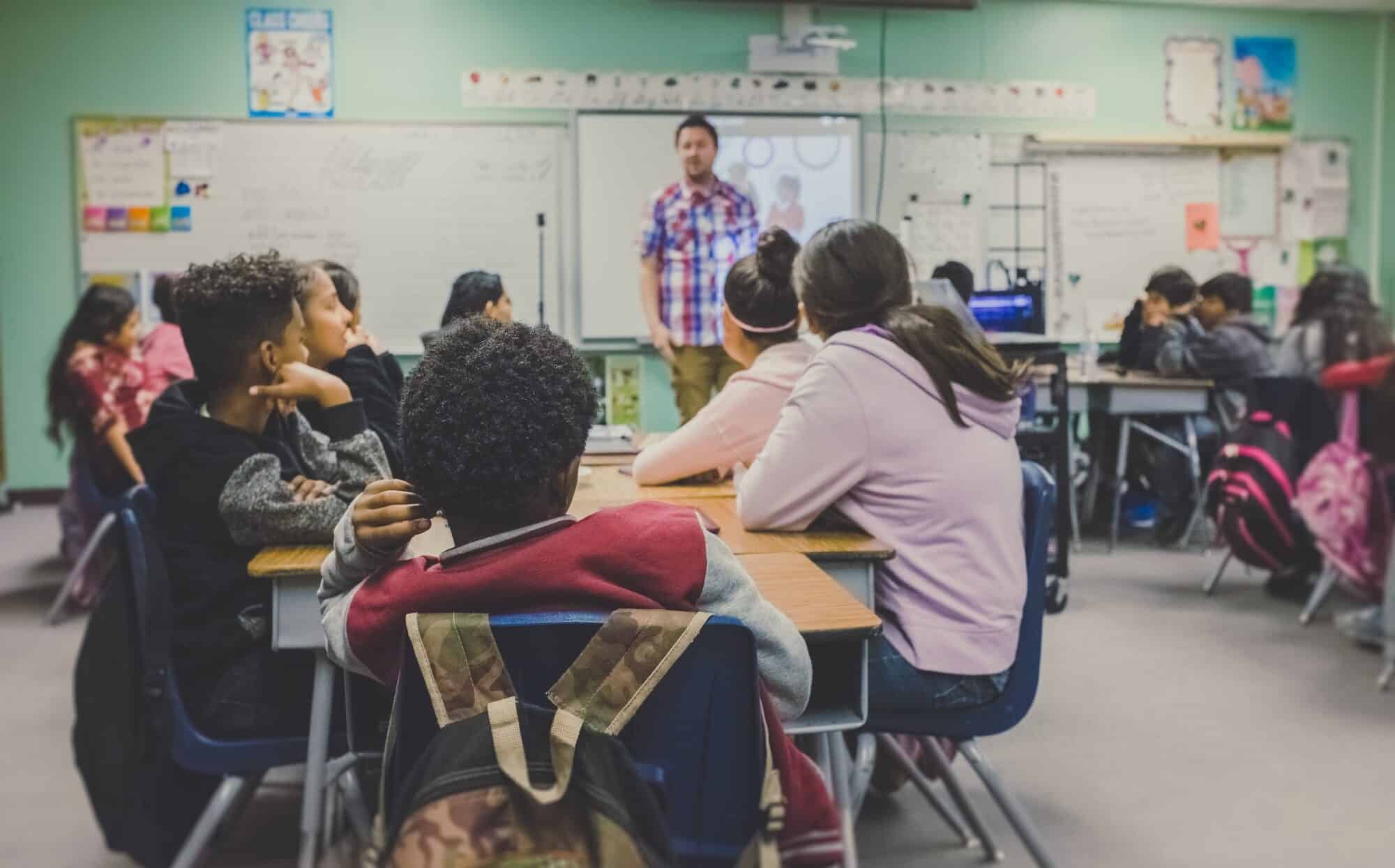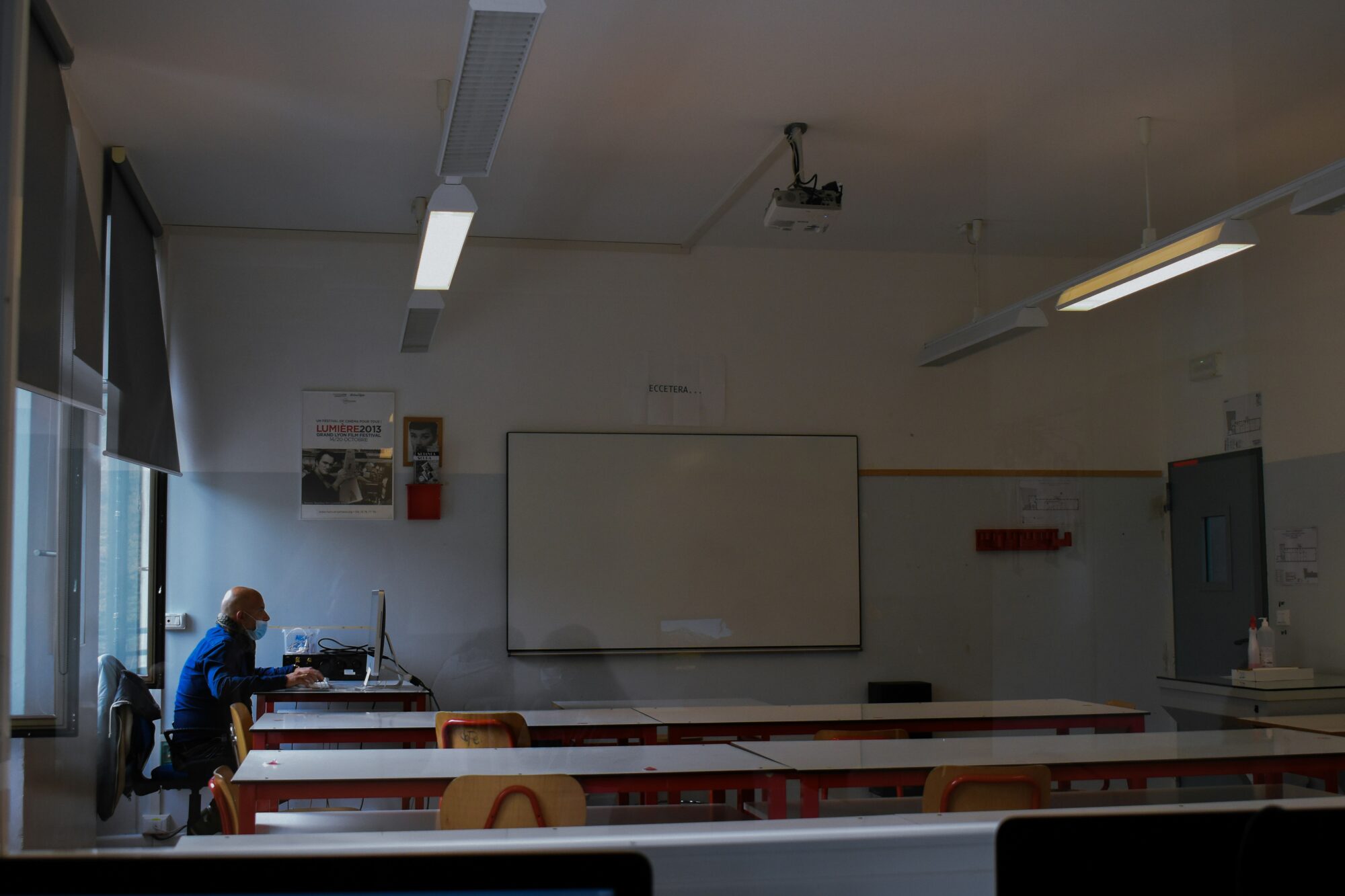Public education is the foundation of Canadian society. Over the past two centuries, the institution has developed into rite of passage for children and youth, playing an integral role in their career development and meaningful participation in democratic life.
Despite wide-spread support for a publicly funded education system, education funding in provinces such as Ontario, Alberta, and Saskatchewan is the target of short-sighted attacks by current conservative governments, the effects of which could impact a whole generation of students.
The deterioration of education in Ontario
Premier Doug Ford marked his first year in government by cancelling the much needed update to the health and education curriculum, shirking on commitments to reconciliation, increasing class sizes, and mandating four (now two) credits of e-learning, all of which will trigger the loss of thousands of teaching jobs and the proximity of students to caring adults.
Ford is picking up where Mike Harris, Ontario’s Progressive Conservative Premier in the mid-1990s, left off. Harris’s aggressive cuts to education culminated in the largest teacher strike in Canadian history. Today, the state of education in Ontario has yet to recover. While Canada performs better than average on international OECD Programme for International Student Assessment (PISA) rankings, our achievement remains stagnant.
The one-size fits all funding formula, which does not meet diverse student needs, is still inequitable and the state of school disrepair is so extensive that it is often cheaper to tear down a school than to repair it. Schools across Ontario over-rely on fundraising in order to meet the needs of their communities. With a growing gap between the rich and poor, inequities in education are creating a two-tiered system that disproportionately impacts schools unable to raise funds to make up for the shortfall.
This conservative approach to education policy gives preference to corporate actors and vilifies public partners as being in it for themselves. The disingenuity from successive Ontario PC Ministers of Education, whose contact with children is largely limited to private-access consultations and extravagant photo-ops, is far removed from the perspective of educators on the ground, who are well equipped to diagnose the needs of students they are entrusted to serve. But it is more than just having a “tin-ear” to the needs of students. The conservative approach to public education uses narratives and tactics to tip the scale towards privatization of education.
Three conservative strategies to undermine public education
When in power, conservative governments across Canada have a record of not only undermining and defunding public education, but also proposing and implementing policies that grant private schools more resources and power. Below are three strategies used by conservatives to cut resources to public education.
A Narrative of Crisis
In order to justify cuts to public education, they are leveraged under the guise of economic crisis. While pressures on the economy are often real, the response of conservative governments is a choice. Targeting public resources, rather than expanding revenue streams or reducing corporate welfare, is a short-sighted choice. Ford’s PC’s, for example, exaggerated projected debt while “throwing away millions,” to spite clean energy programs.
This narrative of crisis (economic or otherwise) is well rehearsed, not only in Ontario but also by conservative jurisdictions across the country, distracting the public from the significant investments needed to return our country to a level that has historically offered competitive advantage.
Conservatives are indeed open for business, but closed to people.
Ontario isn’t unique. Since electing conservative Premiers, Manitoba, Saskatchewan, New Brunswick, and Alberta, have signaled similar regressive reforms that, through the euphemisms of ‘modernization’ and ‘school choice’ pit public education against the economy and invite private interests to profit from public assets.
In Manitoba under the Manitoba PC government, provincial costs have been offloaded to local divisions, the power of school authorities weakened, and grants that kept property taxes low clawed back. This limits the ability of divisions to adequately fund schools. These educational reforms have proceeded despite increasing enrollment.
In Saskatchewan under the conservative Saskatchewan Party government, corporations are eligible for tax breaks while education workers are asked to withstand the pressure of cuts in order to balance the budget. And New Brunswick’s Progressive Conservative government is poised to eliminate grade levels under the pretense of ‘crisis’ in elementary school despite evidence that the practice exacerbates inequality.
The false separation between education and the economy belies the reality that public education is the best investment in future prosperity and the best antidote to widening income inequality.
The Myth of Modernization
Modernization, while sounding futuristic, is one of the oldest euphemisms in the education handbook. The term ‘modernization’ was first used to institute 19th century public schools with the goal of “social, moral, intellectual, and economic elevation”; it is now a catch-all for austerity measures, central to which are cuts in public expenditure.
In Ontario, a press release titled ‘Modernizing Classrooms’ listed cuts to education that replace support for outdoor education and under resourced youth with mandatory e-learning. The same release detailed increases to class sizes, compromising what face-to-face classes remain.
The increase in class sizes will not only decrease contact time with teachers, but have the dual impact of limiting course offerings — a crisis e-learning is poised to solve.
However, in Ontario, e-learning is a technology accessed by already high-achieving students. With a mandate to scale-up access by 95%, mandatory e-learning is an experiment the province is conducting on students, the costs of which will be disproportionately paid by the most vulnerable young people in the province.
In Alberta, legislation promoted as ‘modernizing schools’ rolled back protections for gay-straight alliances and expanded the reach of charter schools, which are publicly funded ‘independent’ schools that have, in the United States, further segregated states like Delaware by race and class after the implementation of school choice policies. When schools are segregated, Black students in particular are impacted by lower academic achievement because funding is funnelled away into whiter wealthier communities. With the potential for expansion, The Alberta Teachers’ Association has expressed concern over the threat it poses “to the integrity of public education” in the province.
The Illusion of School Choice
School choice is a concept that is promoted by conservatives to justify publicly funding private, independent schools, and/or charter schools. The logic is that by expanding the range of options, parents will choose the school they feel is best and the competition will incentivize poor performing (namely public) schools to improve outcomes. This is another false choice.
On the flip-side of charter schools are vouchers that publicly fund students attending private schools while divesting from a unified public education system. Such school choice policies further divide society and exacerbate inequality. Alberta is currently debating an expansion of their voucher system, and the Manitoba School Boards Association isn’t ruling out the possibility of vouchers, so long as they are as accountable as public schools.
The failed experiment of choice in the United States illustrates that the risk is not one worth taking, especially if the outcome segregates society by race and socioeconomic status.
In the service of public interest
Conservative governments haven’t always served private interests, but since the 1990s, policies that positioned social programs as liabilities rather than investments, and private industry as partners, have compromised the value upon which democracy was founded: in service of public interest. Indeed, there is only so much you can cut and gut before social and cultural life is compromised, at which point we will have to expand our hospitals and prisons to accommodate the moral decay.
John Snobelen, the Minister of Education in 1995, told bureaucrats that if they wanted change, they would have to invent a crisis. Conservative Premiers have done just that by marketizing education out of public hands. As tensions between provincial governments and stakeholders in public education rise, it is imperative, now more than ever, that we send a united message: protect, prioritize, and expand public education.





